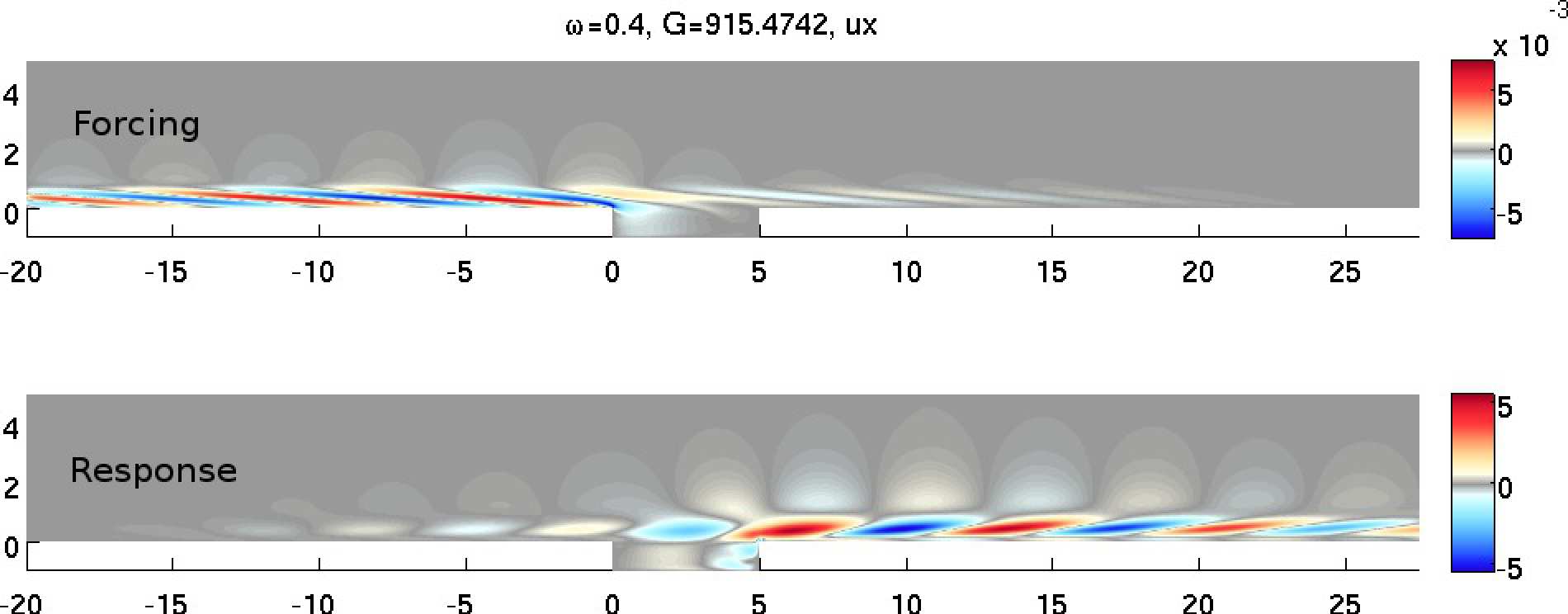Crossflow transition
Dr Hui Xu: The behaviour of Tollmien-Schlichting waves undergoing small-scale localized distortions
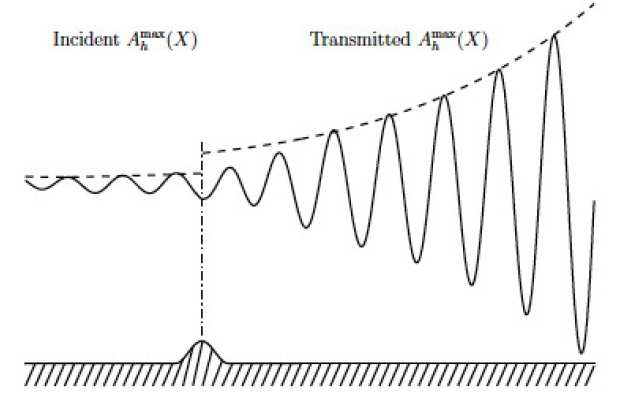 Dr. Hui Xu has been investigating laminar-turbulent transition using state of the art numerical modeling in conjunction with asymptotic theory. One of the key focuses of his research is to see how asymptotic theory and computational modeling can be used to address this challenge. Hui developed a strategy of how to quantify the influence of localised roughness on the boundary layer instability through the Tollmein-Schlicting wave.
Dr. Hui Xu has been investigating laminar-turbulent transition using state of the art numerical modeling in conjunction with asymptotic theory. One of the key focuses of his research is to see how asymptotic theory and computational modeling can be used to address this challenge. Hui developed a strategy of how to quantify the influence of localised roughness on the boundary layer instability through the Tollmein-Schlicting wave.
blah
More detail and links to research outputs
The interaction between Tollmien-Schlichting (T-S) waves and rapid distortions on the wall has practical significance for prediction of laminar-turbulence transition. Hui’s interest is to study, through non-linear direct numerical simulations, the behaviour of unstable T-S waves when the base flows are distorted by rapidly varying localised imperfections on the wall and understand whether T-S waves are energized or weakened by this type of small roughness. He also investigated the relative magnitude of the strengthening or weakening of the T-S wave as compared to a flat-plate. The results obtained by Hui were compared with the asymptotic analysis result. 
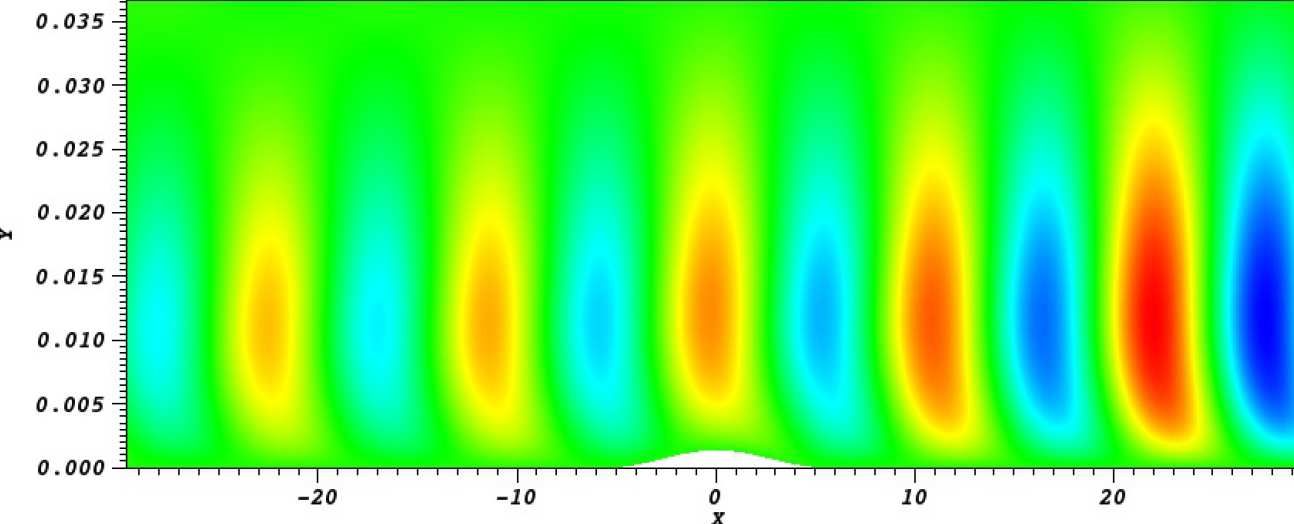 For the small-amplitude localised wall distortions considered, humps and indentations both have destabilising effects rather than having opposite effects as expected on the basis of linearity. This indicates that non-linearity effect is appreciated despite the relatively small height/depth of humps/indentations. The result is broadly consistent with the degeneracy that the leading-order impact of linear distortion vanishes, as regarded the asymptotic analysis.
For the small-amplitude localised wall distortions considered, humps and indentations both have destabilising effects rather than having opposite effects as expected on the basis of linearity. This indicates that non-linearity effect is appreciated despite the relatively small height/depth of humps/indentations. The result is broadly consistent with the degeneracy that the leading-order impact of linear distortion vanishes, as regarded the asymptotic analysis.
Publications
C. D. Cantwell, D. Moxey, A. Comerford, A. Bolis, G. Rocco, G. Mengaldo, D. de Grazia, S. Yakovlev, J.-E. Lombard, D. Ekelschot, B. Jordi, H. Xu, Y. Mohamied, C. Eskilsson, B. Nelson, P. Vos, C. Biotto, R. M. Kirby, S. J. Sherwin (2015). Nektar++: An open-source spectral/hp element framework,Computer Physics Communications 2015
Other outputs
Transmission Coefficients Industry Application
Dr Mohammed Afsar: Receptivity of three-dimensional boundary layer to small-scale free-stream turbulence (FST): distortion of FST and its impact on a flat-plate boundary layer in a contracting stream
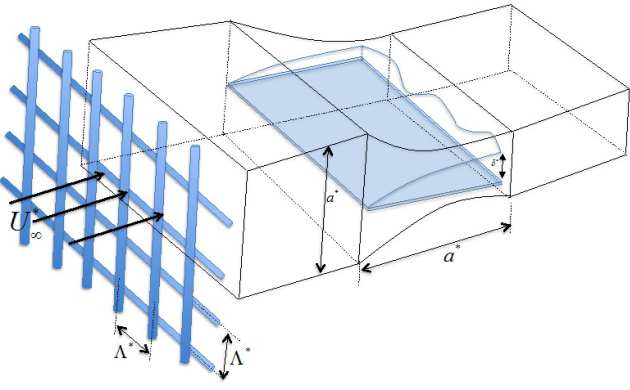 Our aim here is to elucidate the mechanism and process by which FST generates travelling-wave vortices in a three-dimensional boundary layer. This will have important impact in understanding cross-flow receptivity. As a necessary first step, we analyze how FST is distorted by the mean strain rate of a contracting flow with finite streamwise pressure gradient shown in the figure (right).
Our aim here is to elucidate the mechanism and process by which FST generates travelling-wave vortices in a three-dimensional boundary layer. This will have important impact in understanding cross-flow receptivity. As a necessary first step, we analyze how FST is distorted by the mean strain rate of a contracting flow with finite streamwise pressure gradient shown in the figure (right).
blah
More detail and links to research outputs
Dr Ubaid Qadri: Global stability and frequency response methods
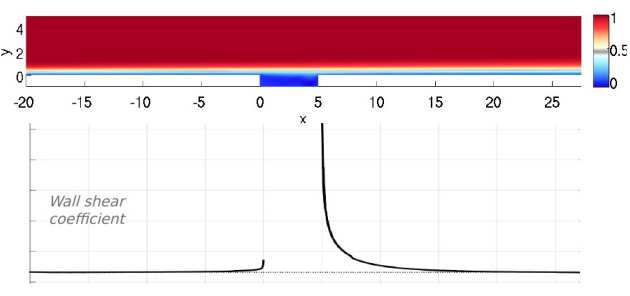 Ubaid's research is concerned with the effect of surface discontinues, such as gaps and steps, on the boundary layer developing over the wing surface. He has developed a general-purpose solver that can be used to identify what modes of instability are excited and amplified and how this depends on the geometry of the surface discontinuities. The tools developed offer an advantage over traditional methods used to predict transition because they take non-parallel, transient and non-modal effects into account. They can provide useful sensitivity information to designers - not just what happens, but also why it happens.
Ubaid's research is concerned with the effect of surface discontinues, such as gaps and steps, on the boundary layer developing over the wing surface. He has developed a general-purpose solver that can be used to identify what modes of instability are excited and amplified and how this depends on the geometry of the surface discontinuities. The tools developed offer an advantage over traditional methods used to predict transition because they take non-parallel, transient and non-modal effects into account. They can provide useful sensitivity information to designers - not just what happens, but also why it happens.
blah
More detail and links to research outputs
Jamie Nutter: Generation of Görtler vortices within the boundary-layer caused by variable wall curvature in the streamwise direction
 Jamie’s research centres around asymptotic descriptions of high-Reynolds-number fluid flows, which occur in flows past aircraft wings. His current PhD research focuses on the generation of Görtler vortices within the boundary-layer, in the long-wavelength (viscous-inviscid interaction) regime, caused by variable wall curvature in the streamwise direction. Görtler vortices occur on the underside of aircraft wings and may grow such that they contribute to the transition to turbulence. Jamie is looking to understand if it is possible to delay or prevent the amplification of Görtler vortices by varying the wall curvature.
Jamie’s research centres around asymptotic descriptions of high-Reynolds-number fluid flows, which occur in flows past aircraft wings. His current PhD research focuses on the generation of Görtler vortices within the boundary-layer, in the long-wavelength (viscous-inviscid interaction) regime, caused by variable wall curvature in the streamwise direction. Görtler vortices occur on the underside of aircraft wings and may grow such that they contribute to the transition to turbulence. Jamie is looking to understand if it is possible to delay or prevent the amplification of Görtler vortices by varying the wall curvature.
blah
More detail and links to research outputs
 To undertake this research Jamie is using high-Reynolds-number asymptotic approximations. The asymptotic scalings are found to be given by a triple-deck type structure and a WKB-type expansion is used to solve for the velocities and displacement.
To undertake this research Jamie is using high-Reynolds-number asymptotic approximations. The asymptotic scalings are found to be given by a triple-deck type structure and a WKB-type expansion is used to solve for the velocities and displacement.
An abrupt change causes a travelling wave to be scattered and so Jamie set up a local scattering problem, in which the mechanisms are described mathematically using a triple-deck formalism and the analysis is based of a Wiener-Hopf factorisation.
The impact of adding porosity was characterised by a transmission coefficient, defined as the ratio of the amplitudes of the transmitted and incident waves. He found that, by using Darcy’s law to describe the permeability, adding porosity to an aerofoil has a destabilising effect and may lead to an earlier transition into turbulence.
Adam Butler: Non-Parallel-Flow Effects on Stationary Crossflow Vortices at Their Genesis
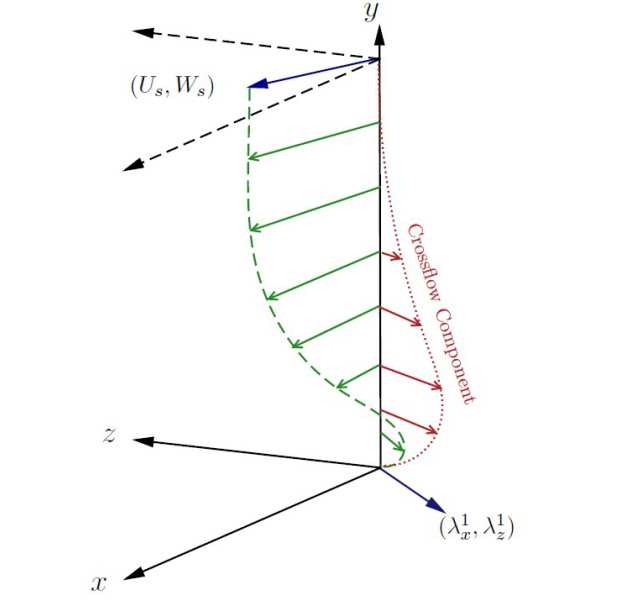 Adam's research is focused on the behaviour of stationary crossflow vortices in their early stages. His current work is on the linear stability of these vortices in a regime where non-parallel variations of the base flow have a leading order effect on their growth. This non-parallel regime occurs near the leading edge of the wing, where the vortices are generated. Adam is working to determine if the most unstable vortices can be suppressed through the appropriate design of the surface roughness in this regime, or through some other receptivity mechanism.
Adam's research is focused on the behaviour of stationary crossflow vortices in their early stages. His current work is on the linear stability of these vortices in a regime where non-parallel variations of the base flow have a leading order effect on their growth. This non-parallel regime occurs near the leading edge of the wing, where the vortices are generated. Adam is working to determine if the most unstable vortices can be suppressed through the appropriate design of the surface roughness in this regime, or through some other receptivity mechanism.
blah
More detail and links to research outputs
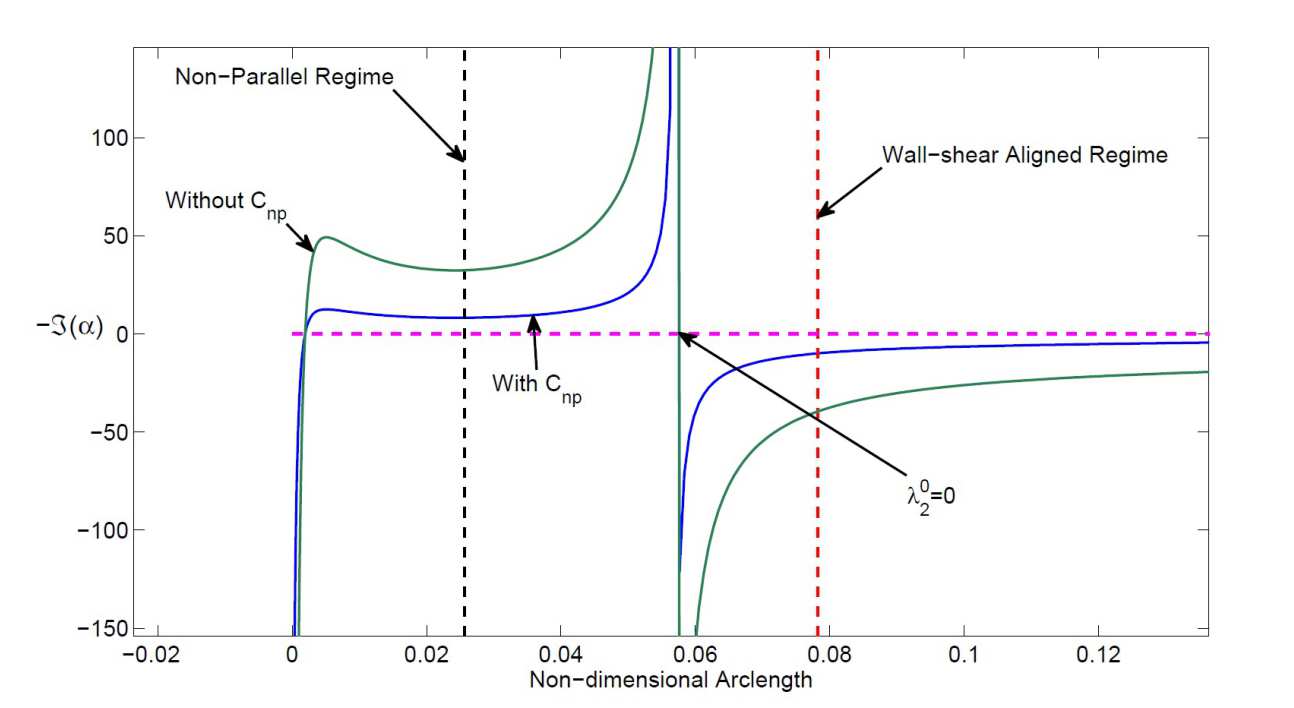 In this non-parallel regime the flow takes on a marginally-separated triple deck structure, with the vortices aligned with the local wall shear at leading order. Adam has found that the non-parallel variations of the base flow and those of the instability mode itself provide the same contribution to the growth rate of the vortex, and so must both be taken into account when performing a general stability analysis in this region. If the pressure minimum of the flow occurs in this regime, a distinct sub-region forms where pressure plays only a passive role between the decks. For a typical aerofoil design, the non-parallelism of the the flow has a stabilising effect on the vortex in this regime.
In this non-parallel regime the flow takes on a marginally-separated triple deck structure, with the vortices aligned with the local wall shear at leading order. Adam has found that the non-parallel variations of the base flow and those of the instability mode itself provide the same contribution to the growth rate of the vortex, and so must both be taken into account when performing a general stability analysis in this region. If the pressure minimum of the flow occurs in this regime, a distinct sub-region forms where pressure plays only a passive role between the decks. For a typical aerofoil design, the non-parallelism of the the flow has a stabilising effect on the vortex in this regime.



